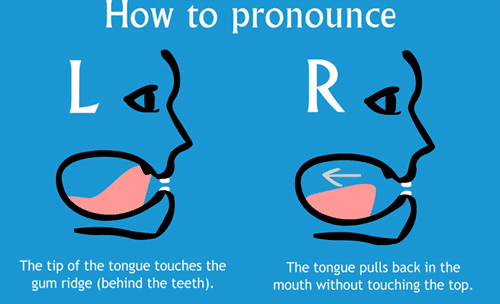Contents
- 1. Learn to Listen
- 2. Learn with the Best English Pronunciation Dictionaries Online
- 3. Notice How Your Mouth and Lips Move
- 4. Pay Attention to Your Tongue
- 5. Break Words Down Into Sounds
- 6. Add Stress to Sounds and Words
- 7. Ask Yourself Which English Dialect You Want to Learn
- 8. Exaggerate Certain Sounds (Make Them Bigger)
- 9. Write Out Difficult Words by Their Sounds
- 10. Write Down What You Hear
- 11. Practice with Tongue Twisters
- 12. Use Pronunciation Podcasts and Videos
- 13. Record yourself.
- 14. Practice with a Buddy
- 15. Speak as Much as You Can
How to Improve Your English Pronunciation in 15 Steps

Learning to pronounce English words correctly can be one of the hardest parts of learning English, especially if there are sounds that your native language doesn’t have or you tend to get tripped up by tricky vowel pronunciation.
See how “way,” “weigh” and “whey” are all said the same, while “comb,” “bomb” and “tomb” are all pronounced differently?
That’s why I have 15 tips for you, to help you pronounce even the trickiest English words correctly.
You can also check out some tips from our YouTube channel:
Download: This blog post is available as a convenient and portable PDF that you can take anywhere. Click here to get a copy. (Download)
1. Learn to Listen
Before you learn how to speak, you’ll need to learn how to listen. Some sounds can be hard to tell apart when you’re listening. Did the speaker sleep or slip? Did he hurt his chin or his shin? If you can hear the difference, it will be easier to speak the difference.
There are many guides to get you started in learning to listen. We have some great articles here about learning to listen from movies, songs and music and podcasts. You can also find listening exercises online, like this one from Rong-chang.
The pronunciation practice at Many Things is really slick, especially its huge selection of lessons on minimal pairs. Minimal pairs are pairs of words like sleep and slip, that are only different by one sound. You can click on each word to hear a complete sentence with each, then quiz yourself in the second box and click the correct answer.
2. Learn with the Best English Pronunciation Dictionaries Online
You probably already use a dictionary to translate English words, but online or digital dictionaries can offer many additional benefits, including pronunciation guides. These kinds of dictionaries are some of the most useful tools you can have for practicing English pronunciation. Best of all, they’re available online for free!
Here are some of the best pronunciation dictionaries you can find and use online.
Google Translate
You may have already used Google Translate during your English studies. Google Translate is an easy-to-use translator that also provides pronunciation guides for single words and whole sentences. As soon as you get to Google Translate’s interface, you can look up any word and it will give you a number of definitions and an audio pronunciation.
If you’re just looking for pronunciation help, type in Google search “how to say (insert word).” You will get both an audio pronunciation guide (which you can slow down) and a visual guide that shows how your mouth should move when saying the word.
FluentU
It uses a natural approach that helps you ease into the English language and culture over time. You’ll learn English as it’s spoken in real life.
FluentU has a variety of engaging content from popular talk shows, nature documentaries and funny commercials, as you can see here:

FluentU makes it really easy to watch English videos. There are captions that are interactive. That means you can tap on any word to see an image, definition and useful examples.

For example, when you tap on the word "searching," you'll see this:

Learn all the vocabulary in any video with quizzes. Swipe left or right to see more examples for the word you’re learning.

The best part is that FluentU keeps track of the vocabulary that you’re learning and gives you extra practice with difficult words. It even reminds you when it’s time to review! Every learner has a truly personalized experience, even if they’re learning with the same video.
Start using the FluentU website on your computer or tablet or, better yet, download the FluentU app from the iTunes or Google Play store. Click here to take advantage of our current sale! (Expires at the end of this month.)

Forvo
Forvo is a user-generated pronunciation guide in which native speakers submit audio clips of themselves saying certain words or phrases. You can look up a word, learn its definition and listen to how different people from different places say it. There are also pronunciations for whole sentences and phrases as well!
Forvo is well-liked because real people are the ones speaking the words. You can also see how certain speakers are ranked in their pronunciations; the pronunciations with the most likes may be the ones you should focus on.
Because the audio submissions can come from all over the world, you can listen to how the same word is said in different regional accents; the importance of this will be discussed in more detail later on.
Merriam-Webster Dictionary
Merriam-Webster is also known as “America’s most useful and well-known dictionary.” It’s no surprise then that it’s here on this list! The dictionary offers detailed definitions and information about the words you look up, as well as clear, good-quality audio pronunciations.
You can also download the free app version of this dictionary, which comes with some special features. With the app, you can search for words by speaking them out loud into your device’s microphone—this is great for when you don’t know how to spell a word, but it’s also good speaking practice. If there are any words that interest you, you can save them into your own “favorites” list.
WordReference
WordReference is a helpful multilingual dictionary. It supports translations for a lot of languages, so if your native language is included, you can find a word in English by writing it out in your language, or search for English words and get translations in your language. This is very helpful when you want to make sure you’re getting the right translations.
WordReference also lets you listen to audio pronunciations in different English accents, more than many other dictionaries. Most online dictionaries may just offer one British pronunciation and one American pronunciation, but WordReference also specifies other specific accents such as Irish, Scottish, American Southern and even Jamaican. After you look up a word, you can click on the “Listen” button to pick the accent you want to hear and change the speed of the audio.
Oxford Learner’s Dictionaries
Oxford’s online dictionary, provided by the well-respected Oxford University Press, is a great resource for beginner learners. Sometimes, dictionaries can offer a lot of information that can make things confusing—Oxford’s dictionary takes out a lot of the confusion and gives you the main things you need. The definitions are written in an easy-to-understand manner and you get plenty of example sentences that show you how the word is used.
The dictionary has two pronunciation options: you can listen to the word spoken in British English or in American English. The pronunciations are done by different male and female humans (not robots!), which can be great for your listening practice.
Collins Online Dictionary
This dictionary offers most of what the other listed dictionaries have, but with some extra audio features. Once you look up a word, Collins dictionary also provides audio pronunciation of the word in its different forms (such as in past tense or participle form). There are even audio pronunciations for the example sentences that show the word in use, which can be very useful when you want to practice speaking in whole phrases.
Collins dictionary provides slightly different definitions: the first “Collins” definition, the second “British English” definition and the third “American English” definition. With each definition section, you can hear either the British or American pronunciation of the word. In some cases, there may even be a video clip of a real person saying the word!
One thing to note is that the example sentence pronunciations are done by a text-to-speech robot instead of a human. However, the voice doesn’t sound too unnatural or strange, so you can still find these pronunciations helpful!
A dictionary is a study tool that you’ll always want to have around when you’re studying and practicing English. If you ever learn a new word and aren’t sure how to pronounce it, then a dictionary with audio functions can give you immediate help.
3. Notice How Your Mouth and Lips Move
When you speak, you move your mouth. How you move your mouth affects how you pronounce a word.
The first step to correcting your mouth shape is to notice it and pay attention. There are a few ways you can check that your mouth and lips are making the correct shape:
- Use a mirror. This is by far the simplest way to tell what your mouth is doing while you talk.
- Put a finger in front of your lips (like you’re saying “shh”). As you speak, don’t move your finger. You should feel your lips moving away from or pushing against your finger.
Watch other people and notice the shape their mouth and lips make when they talk. Try following along with your favorite TV show or movie. Can you repeat the faces and sounds that the actors are making?
There are guides and pictures online that will help you learn how to move your mouth. Sounds of English has some good explanations for pronouncing specific words. This guide is for people making 3D animations, but the pictures are a great start to understanding how your mouth should look when you speak.
You can also find great videos showing how to properly form the mouth and lip shapes when you’re speaking, like this one from Georgie Harding:
Feeling stiff? Loosen up your mouth and tongue and get ready to practice your speech with this fun warm-up exercise from Howcast!
4. Pay Attention to Your Tongue
The main difference between rice and lice is in your tongue. When you speak, you move your tongue to make sounds. You probably didn’t even notice that, since you do it without thinking. To improve your English pronunciation, it’s a good idea to check what your tongue is doing.
Some difficult sounds for non-native speakers to make are the letters “L” and “R,” and the sound “TH.” Pronouncing them correctly is all in the tongue!
- To make the “L” sound, your tongue should touch the back of your front teeth and the top of your mouth, just behind your teeth.
Try it now: Say the word “light.” Say it a few times. Feel where your tongue is in your mouth. Make sure it touches the top of your mouth. - To make the “R” sound, your tongue should not touch the top of your mouth. Pull your tongue back to the middle of your mouth, near where it naturally rests if you weren’t saying anything. As you say the sound, your lips should be a little rounded.
Try it now: Say the word “right” a few times. You should feel air blowing between your tongue and the top of your mouth as you speak. You should also feel your lips get a little rounder when you make the sound. - Now for the “TH” sound. To make this sound, put your tongue between your top and bottom teeth. Your tongue should stick out a little between your teeth, and as you push air out of your mouth, let some air escape between your tongue and teeth—that’s what makes the sound.
Try it now: Say the word “think.” Repeat it a few times. Make sure you push your tongue between your teeth.
Check out this video about to learn how to pronounce 20 of the most commonly used words in English:
There are many other pronunciation guides on YouTube, so look around for one that helps you master the sounds of the language!
If you can’t figure out what to do with your tongue to make the right sound, try asking someone. Ask them to say a word with that sound, then tell you where they put their tongue. They’ve probably never thought about it before, either!
5. Break Words Down Into Sounds
Words are made up of syllables, or parts. The word “syllable,” for example, has three syllables: syl-la-ble. Turning words into parts can make them easier to pronounce.
To check how many syllables a word has, place your hand flat just under your chin. Say the word slowly. Each time your chin touches your hand, that’s a syllable.
You can even write the word down in parts. Leave a space or draw a line between each syllable (every syllable should have at least one vowel: a, e, i, o, u, y). Now try saying the word. Say it slowly and pause after each syllable. Isn’t that easier?
If you’re having trouble with syllables, you can check out How Many Syllables. This website shows you the syllables in any word you look up, and even shows you how to pronounce it.
6. Add Stress to Sounds and Words
English is a stressed language. That means some words and sounds are more important than others. You can hear this when you say a word out loud. For example, the word “introduce” is pronounced with a stress at the end, so it sounds like this: “in-tro-DUCE.”
Sometimes, where you put the stress in a word can change the word’s meaning. Say this word out loud: “present.” If you said “PREsent,” you are talking about a noun that means either “right this moment” or “a gift.” If you said “preSENT,” you are talking about a verb that means “to give or show.”
You need to remember that most two-syllable nouns are stressed on the first syllable, and most two-syllable verbs are stressed on the second syllable (like “present”).
If this all sounds too complicated, don’t worry about memorizing all these rules—the best way to learn is by listening and practicing. Remember that most native English speakers don’t know the rules, either—they just say what “sounds right.” With enough practice, you can get what sounds right, too.
This video about six common English mistakes goes over word stress in detail in the first point:
Keep watching the rest of the video for other useful tips for avoiding some of the most common English learner mistakes.
Watch this video from mmmEnglish for more information about syllable stress in English:
Sentences have stresses too; some words are more important, and are said with more clarity and strength than the rest of the sentence. Try reading this sentence aloud: “I ate some toast with butter in the morning.”
The sentence should have sounded like this (the bold words are the stressed ones): “I ate some toast with butter in the morning.” Notice how you slow down every time you get to an important word, and quickly pass over the less important ones?
Keep practicing by reading out loud, having conversations and listening well to where others place stress when they speak.
7. Ask Yourself Which English Dialect You Want to Learn
When you speak English, do you want to sound like you’re from America or England? Australia or New Zealand? Maybe Canada or South Africa.
Choosing your dialect of English is one of the first decisions to make on your English-learning journey. Not only it will determine much of the vocabulary you learn but will also drastically affect your pronunciation.
The two most common types of English for ESL students are probably American English and British English.
Choosing which type will affect how you pronounce sounds. For example, in America, the “r” sound at the end of a word is much harsher.
And when a “t” appears in the middle of a word, Americans often pronounce it as a “d,” while the British pronounce it as a hard “t.” Think of words like “water,” “whatever” or “lighter.”
Once you’ve chosen which dialect of English you want to take on, base your studying methods and tools on that decision.
Watching movies and TV shows are fantastic ways to learn English and pick up accents. I particularly love watching TV series, because you have hours of content, and you learn to understand characters’ accents over time.
If you’re looking for a British TV show, I recommend “The Crown,” a drama about Queen Elizabeth II. I also love “The Great British Baking Show.” This reality show is lighthearted and fun to watch, and you’ll pick up modern slang.
How about English shows? “Friends” is a classic option for learning English, and many Americans will love to talk about it with you.
Check out this video breaking down a scene from “Friends” where Monica and Chandler discuss what to do with their extra bedroom to learn how to pronounce commonly used words in American English:
You can also find learning materials that expose you exclusively to your desired dialect.
If you want to learn British English, LearnEnglish Sounds Right will provide an English pronunciation guide for people wanting to attain a British accent, and you can download it for your iOS or Android device.
ELSA Speak: English Accent Coach is a great app for learning how to speak like an American. You can download it at the Apple or Google Play store.
As you can see, your choice of dialect will affect every other decision you make regarding English pronunciation!
8. Exaggerate Certain Sounds (Make Them Bigger)
Depending on your native language and which dialect of English you’re studying, you may find certain sounds to be difficult. Actually, I think every ESL student I’ve met who is learning American English struggles with the American “r” sound!
So how do you master a tricky sound like this?
Believe it or not, exaggerating these sounds will likely make it easier for native speakers to understand you. You may think you sound corny because you aren’t used to making these sounds. But for a native speaker, you’ll sound way more authentic than a foreigner who is shy about these sounds.
Exaggerate. Exaggerate the sound until you feel ridiculous. Exaggerate until you’re sure it’s so over the top that people are going to make fun of you.
What’s the goal? Eventually, you will be so used to the shape your mouth makes that you won’t be conscious of exaggerating, and you won’t be thinking of English pronunciation rules as you speak. And that’s when you know you’re on the path to fluency.
9. Write Out Difficult Words by Their Sounds
Having trouble with certain words? Try writing them out.
No, not just the word. Try writing it out phonetically (by its sounds instead of its spelling).
Let’s say you’re struggling with the word pizza. Write it out phonetically: piːtsə.
When you look at the phonics, you can see that the double-z is pronounced like a “ts.”
Try making flashcards. Write the word on one side, then spell it out phonetically on the other side. If it helps, you can highlight the letters on each side that you’re testing yourself on. (This can be especially useful for visual learners!)
Writing things out phonetically can be difficult, especially if it’s in your second language. If you need help, visit EasyPronunciation.com. Type in the word or sentence you need help with, and the website will transcribe it phonetically for you. (Bonus—it lets you choose between American and British English!)
10. Write Down What You Hear
Want to master English pronunciation? Sit down and listen. Listen to someone speak and write down what they are saying.
You might be thinking, “Hey, I’m here to practice English speaking, not listening!”
However, listening is an excellent way to improve English pronunciation.
In my high school French classes, we had to take dictation (write what the teacher said) every week. The teacher spoke for 20 minutes, and we had to write down exactly what she said. Trying to decipher her accent and write down what we heard made me understand French spelling and pronunciation better.
Don’t have an English teacher who wants to talk aloud for 20 minutes at your disposal? There are plenty of ways to find a resource!
EnglishClub is a great dictation website, regardless of your learning level. Choose from elementary, intermediate or advanced dictation.
You’ll listen to the dictation once at normal speed. Then a second time at a slowed-down speed so you can write it down. Listen for a third time at a normal speed. Then check your answer.
YouTube also has many options to practice your listening and writing skills. Get started with Speak English with Vanessa’s Dr. Seuss dictation video:
You can also watch a scene from a TV show or movie and write down what you hear. If you’re watching on a service that provides subtitles, play the scene again with subtitles to check your work.
If you recognize difficult sounds when you hear them, it’s likely that you’ll learn how to say them.
11. Practice with Tongue Twisters
When speaking English, do you sometimes struggle with similar sounds (like “sh” and “ch,” “t” and “th” or the short and long “e” sounds)? Don’t worry—you’re not the only one.
Tongue twisters can be a fun (but tricky!) way to practice differentiating between two sounds. They’re poems that can be hard to recite because a lot of the sounds are similar.
In English-speaking countries, people say them just because it’s funny when you mess up and sound silly. And it’s satisfying when you finally master the poem!
Here are a few examples of popular, effective English tongue twisters—this one’s great for practicing the “s” and “sh” sounds:
She sells seashells by the seashore.
That’s a very famous tongue twister. But once you’ve got that down, try adding on a few less well-known lines:
Alright, now let’s try one to practice the “cl” and “cr” sounds:
How can a clam cram in a clean cream can?
And now one for the “sh” and “ch” sounds:
If a dog chews shoes, whose shoes does he choose?
Want to practice different sounds with tongue twisters? Take a look at this list.
You can also hear some tongue twisters spoken by a native English speaker on Rachel’s English (and see that even native speakers can have trouble mastering these tricky twisters!):
12. Use Pronunciation Podcasts and Videos
There are some excellent video and audio guides on English pronunciations that you can use to improve. The English Language Club has videos that show how to make different sounds in English. Rachel’s English has friendly videos on how to speak and pronounce American English in everyday conversations.
If you like podcasts better, Pronuncian has over 200 audio files that help with everything from pronunciation to stress and pitch (how you raise and lower your voice while you speak).
If none of these are what you’re looking for, there are many more to choose from. Find the one that’s right for you.
13. Record yourself.
One way to tell if all your practice is working is to record yourself with a camera. Use a camera and don’t just a sound recorder because it’s important to see how you speak, not only hear it.
You don’t need to download any special software to record yourself; most computers and mobile devices have built-in video recorders. You can use PhotoBooth on a Mac or Movie Moments on a Windows computer. The specific programs change with time (the Movie Moments program, for instance, might not be available anymore by the time you read this) but as long as a computer has a camera, you should be able to record videos with it. Your phone or mobile device also has a video capturing app, usually as part of the camera app.
Compare your recording to someone else saying the same words or sounds. Find a video of your favorite part from a movie. Choose one or two sentences and record yourself trying to match the stress, tone and pronunciation of the video. Then you can compare the two, see what you did differently and try again.
Ask a friend or watch a video to check. If your pronunciation doesn’t sound the same, ask yourself some questions: Are you moving your mouth the right way? Is your tongue in the right place? Are you stressing the right part of the word? Use everything you’ve learned in this article so far!
14. Practice with a Buddy

Practicing with a buddy (friend) will give you a chance to try everything you learned, and learn new things from each other. Plus, it’s fun!
15. Speak as Much as You Can
If you don’t speak often, you can become nervous when it’s finally time to open your mouth and say something in English.
It’s like playing basketball. You might be good at running, dribbling and passing, but never shoot the ball.
When it’s time to play and you get a chance to shoot, it would be hard. You could even become so nervous by doing something new in front of other people that your nerves paralyze you.
It’s the same with speaking English. Not only do you need English pronunciation practice, but you need to get over your nerves so that you feel comfortable speaking in front of others. Nerves can lead to a lot of mistakes, especially regarding pronunciation.
Try making a rule for yourself: You must speak English to yourself at home. To start, try just narrating what you’re doing when you’re cooking dinner or getting ready for bed.
Promise yourself that you’re going to speak aloud for at least a few minutes per day.
Pronunciation is as important to learning English as vocabulary and grammar. Thanks to these 15 tips, you’ll soon be on your way to pronouncing English like a native.
And remember: practice makes perfect!
Download: This blog post is available as a convenient and portable PDF that you can take anywhere. Click here to get a copy. (Download)

















